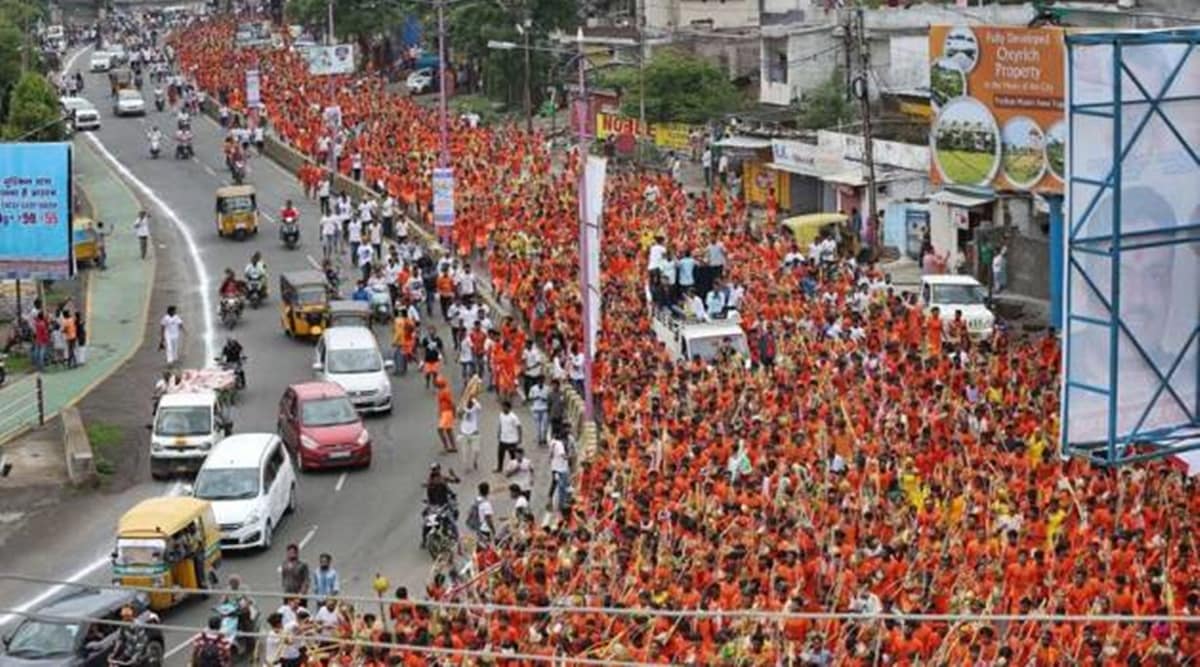The Government of Uttarakhand suspends Kanwar Yatra, Uttar Pradesh says it’s on with restriction
Amid fears of a possible third wave, Uttarakhand finally suspends Kanwar Yatra for this year even when Uttar Pradesh has started preparing for the event.
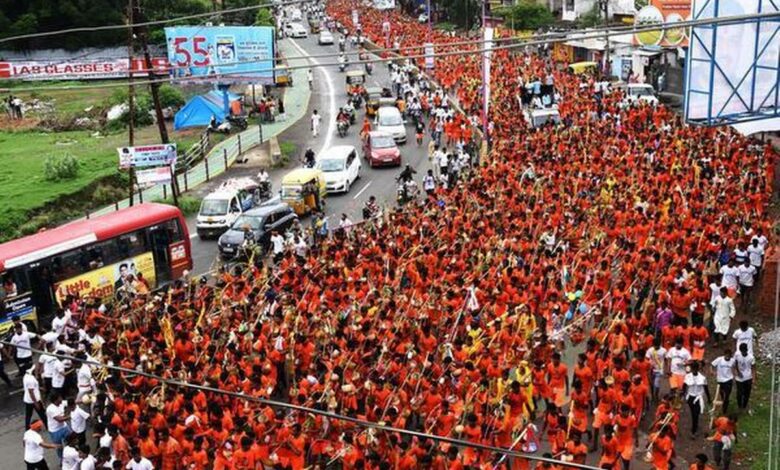
When millions of Hindu devotees gathered to participate in Haridwar for Kumbh Mela, little did they know that they’ll become the super-spreaders of the Coronavirus? Despite the predictions and warnings by experts, the Kumbh Mela continued and the devastation brought by the second wave in India is not unknown to the world. Just when India is witnessing a remarkable dip in the number of active cases, the possibility of a third wave of the pandemic is considerably high.
Amid such fears, the Uttarakhand government took a firm decision of calling off the Kanwar Yatra festival that was supposed to be held from July 25. This decision came after the state recorded few coronavirus cases of the delta plus variant and taking into consideration the rising number of cases in a few countries. It is clear from this decision that the Chief Minister of Uttarakhand Mr Pushkar Singh Dhami does not want to repeat the blunder committed during Kumbh Mela. Even though Uttarakhand decided to prioritise human life, Uttarpradesh seems to turn its face away from the responsibility as the state has decided to continue with the Yatra following Covid-19 norms and procedures.
What is Kanwar Yatra?
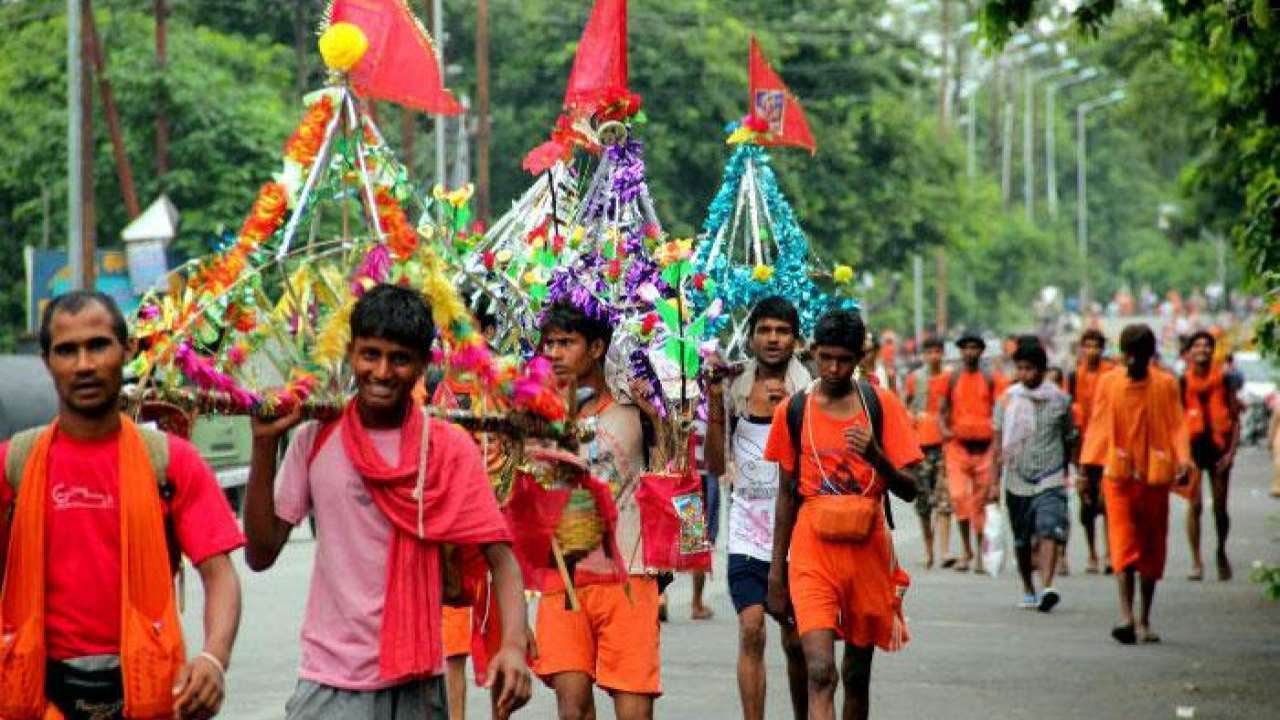
Kanwar Yatra is an annual pilgrimage of the devotees of Shiva. The Shaivite devotees who participate in the yearly pilgrimage are known as Kanvarias and hence the name Kanwar Yatra. The Kanvarias travel from their native places to Hindu religious places in Haridwar, Gaumukh and Gangotri in the state of Uttarakhand; and Sultanganj in the state of Bihar to collect water from the Holy Ganges River.
Millions of Kanvarias gather to fetch the sacred water from the Ganges and take it back to their native places. The Kanvarias carry the Holy water in small pitchers and place it above their heads and travel for hundreds of miles just to distribute the water as offerings in the Shiva shrines of their native places. Some of them dispense the Holy water in significant temples like the Angharnath and Pura Mahadeva temple in Meerut, Deoghar in Jharkhand and Kashi Vishwanath among other temples.
The word Kanwar owes its origin to a religious performance where the pilgrim ritually carry holy water in repositories suspended on both sides of a long pole. The origin of the name of the pilgrimage is arguable as some experts believe that the name owes it to the contraption, while others believe it to be the local name of the Ganges River. The offering is completely dedicated to Shiva, who is also called by his followers as Bhola or Bhole Baba. The annual pilgrimage of the Kanvarias used to be a small event and included few saints and older Shiva devotees.
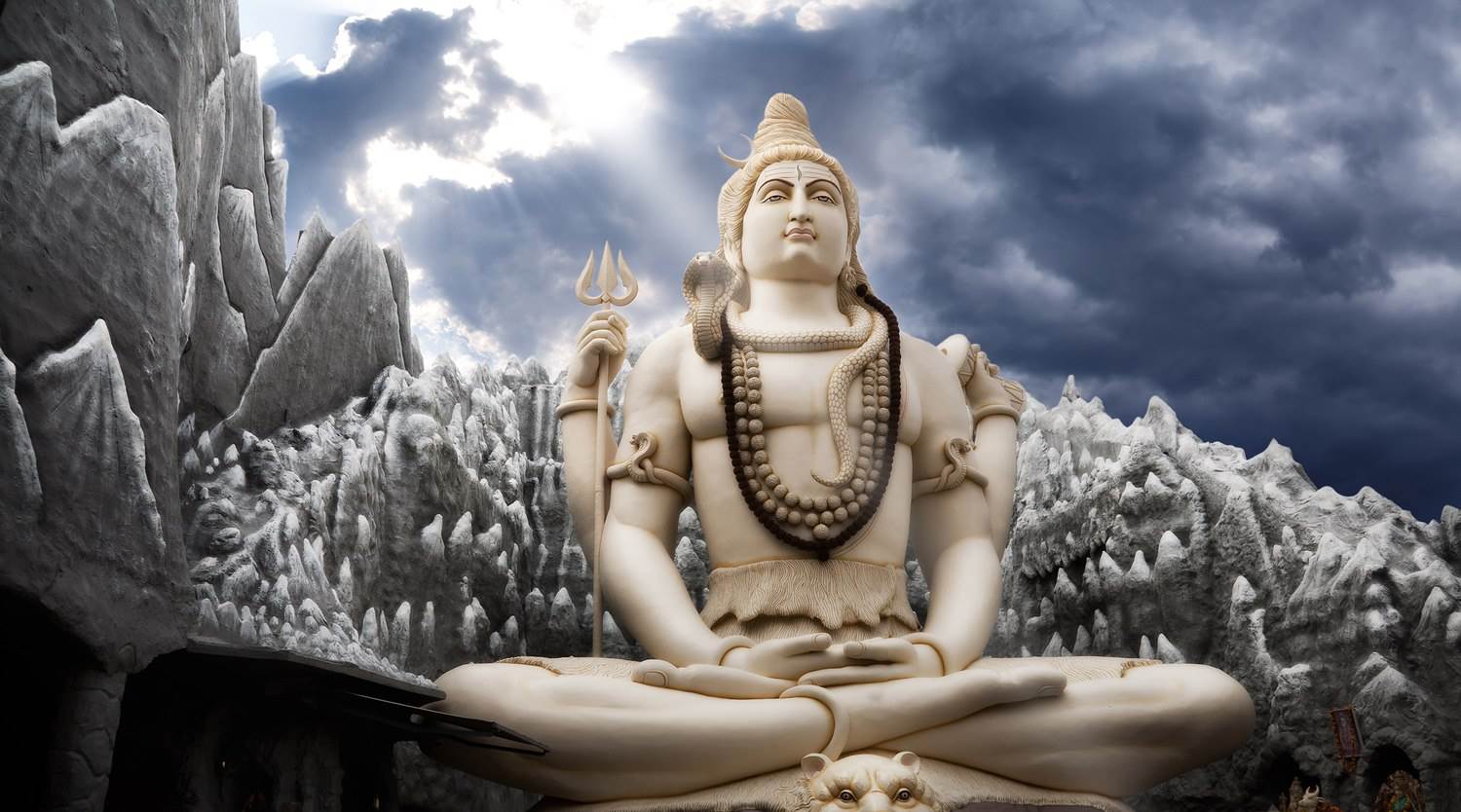
Since the 1980s, the festival started gaining popularity as more people became aware of it. Today, the annual pilgrimage of the Shiva devotees have expanded to such an extent that it has become the country’s largest annual pilgrim gathering. In 2010 and 2011, the Kanwar Yatra estimated participation of almost 12 million pilgrims. The devotees travel from the neighbouring states of Uttar Pradesh, Bihar, Delhi, Haryana, Odisha, Punjab and Rajasthan. Some devotees also travel from Chattisgarh, Madhya Pradesh and Jharkhand. Every year, security is tightened during the time of Kanwar Yatra and the Delhi-Haridwar national highway (NH 58) witnesses a diversion of traffic during the time of the festival.
Burns from the past
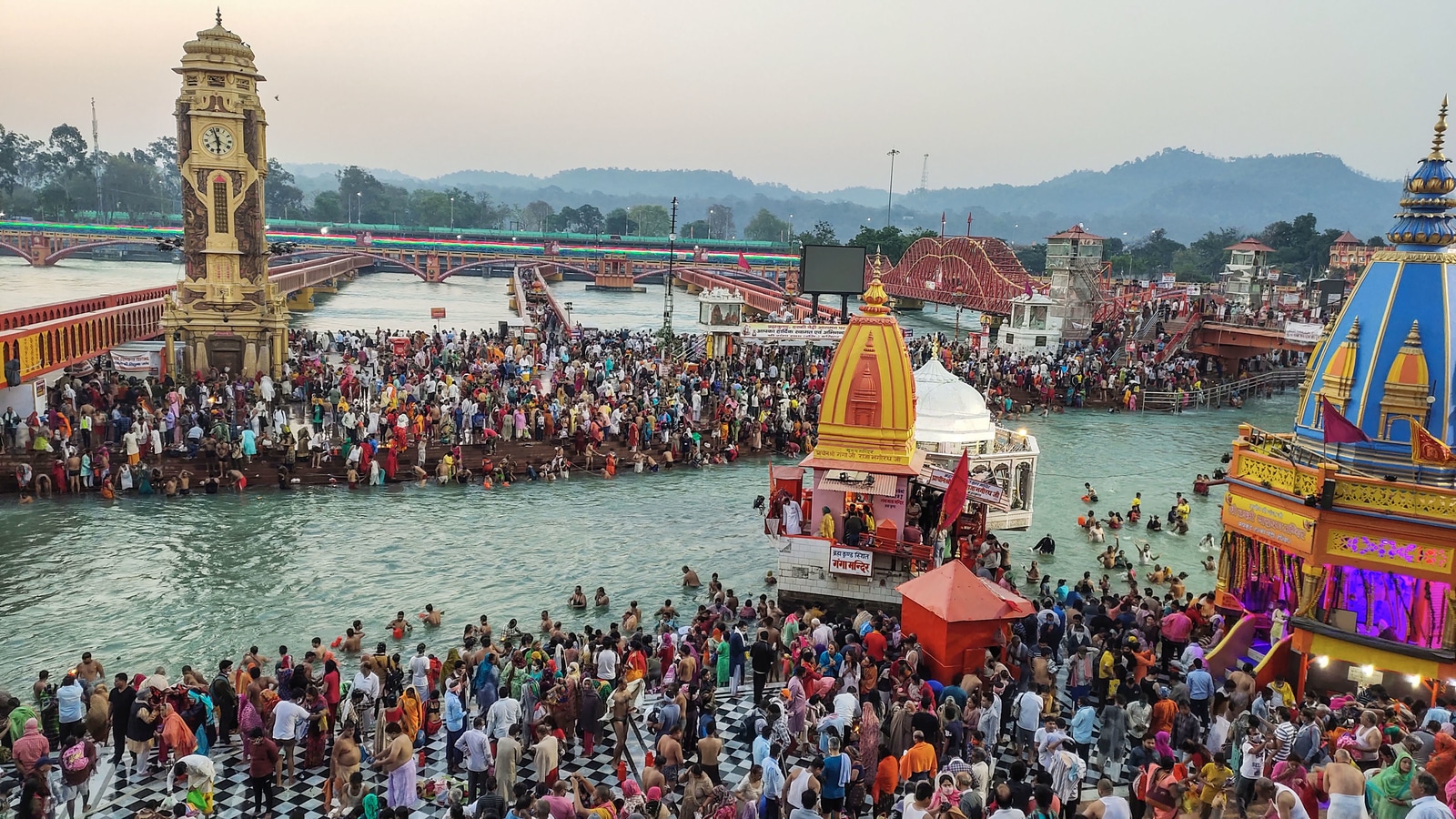
The Mahakumbh incident has opened the eyes of the government and has made it transparent that it is impossible to guarantee people maintain social distancing and wear masks during such religious gatherings. An estimated 9.1 million people visited Haridwar to attend the Mahakumbh in April and needless to mention, Covid-19 protocols were violated amid huge overcrowding. The overcrowding resulted in an increase in cases that overburdened hospitals and instigated shortages of life-saving medical supplies including Oxygen. In the middle of the worst surge in the pandemic’s second wave, the Mahakumbh Mela recorded a gathering of at least 6 million people.
On top of that, one lakh of the rapid antigen tests that were conducted at the mega fare was also discovered to false. The fake tests raised doubts about the effectiveness of the testing during the Kumbh festival. In many states such as Madhya Pradesh and Jharkhand among others, officials discovered local Covid-19 cases that were tracked down to Kumbh returnees. Between April 1 and April 30, Uttarakhand saw a spike in the number of active cases by 2,392 per cent.
The High Court of the state bashed the Uttarakhand Government and stated that holding Mahakumbh was a blunder. 855 or approximately 70 per cent of the 1,210 backlog deaths were reported in May and June by the districts Dehradun, Udham Singh Nagar and Haridwar, after Mahakumbh.
Kanwar Yatra is estimated to draw three to four times greater number of people than the Mahakumbh of April. Roughly, 30 to 40 million devotees are most likely to gather in Uttarakhand for 15 days in contrast to over 9 million people at the Mahakumbh.
According to Mr Sanjay Shah, vice president of the Association of India, with newer variants of the novel coronavirus being reported throughout the country, governments need to be extra careful. He stated that it is very dangerous to let pilgrimage of this strength congregate when the second wave is receding and the country is almost nearing the start of a third wave. “When millions of devotees come, the medical infrastructure in Haridwar is unlikely to make any difference,” Sanjay said.
Challenges
Last year due to the spread of Covid-19 in India, the Kanwar Yatra was called off. Most of the Kanvarias in 2019 were from Haryana (31 per cent) and Uttar Pradesh (27 per cent). The pilgrims reach Uttarakhand crossing over Haridwar district which is the entry point to the Garhwal administrative division. Almost 10 million of the pilgrims arrive on foot to collect the water from the Ganges while the rest of the pilgrims reach on two and four-wheeled vehicles like trucks, public buses, trolleys and trains. Previously, the yatra was supervised and managed by the respective district authorities. Since 2019, the state government started funding the Yatra and allocated Rs 1 crore for the pilgrimage.
Almost 7,000 security staff were allocated for the pilgrimage in 2019. The state has also appointed a Kanwar Mela Force officer of the rank Superintendent of Police for the annual fortnightly pilgrimage. The Kanwar fare region is divided into zones and sectors. More than 50 sector magistrates are given the responsibility to administer the yatra.
Deviation of manpower and resources
According to experts, Uttarakhand is bracing itself for the third strike of the virus, diversion of manpower and resources for the event does not seem logical. The same manpower and resources should be used in preparing the state for the third wave. According to Anoop Nautiyal, founder of Social Development for Communities Foundation, Uttarakhand is still unprepared for the third wave and does not have the required resources to fight the virus for the third time after the Kanwar Yatra.
Mr Nautiyal said that the state must not pay heed to or change its decision due to pressure from states like Haryana and Uttar Pradesh, the event can be fatal not only for Uttarakhand but for the whole country. Mr Nautiyal further suggested the state government that while deciding on the Yatra, it needs to keep in mind how the Standard Operating Procedures (SOP) were violated and how it is almost impossible to follow them as witnessed during the Mahakumbh.

